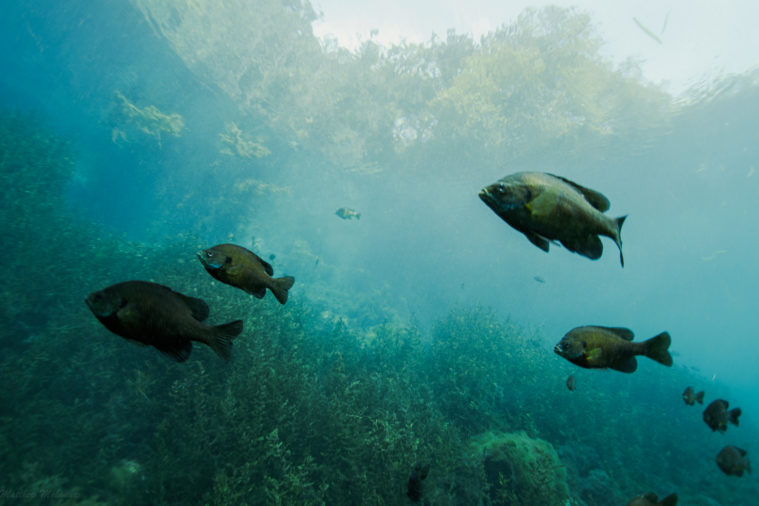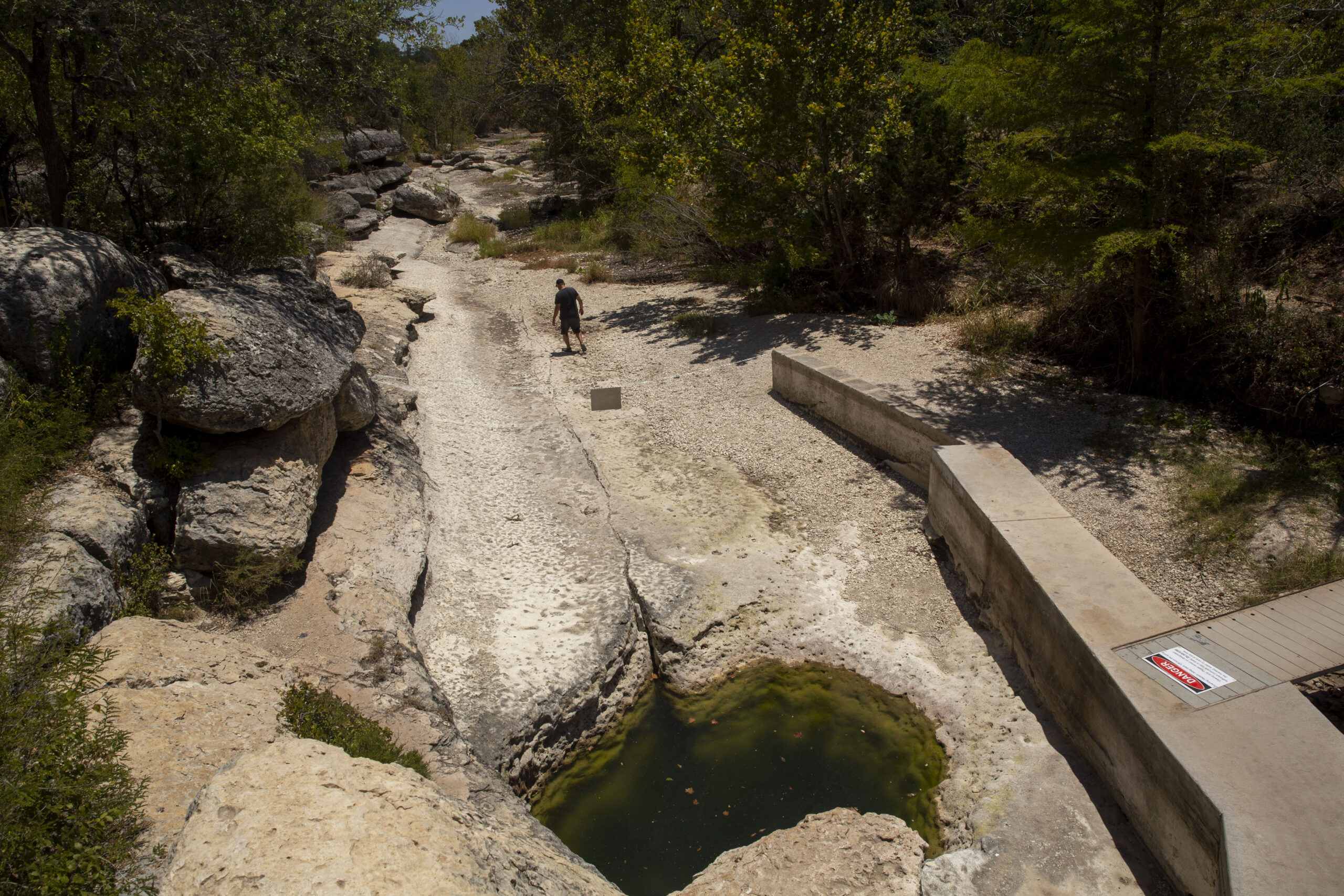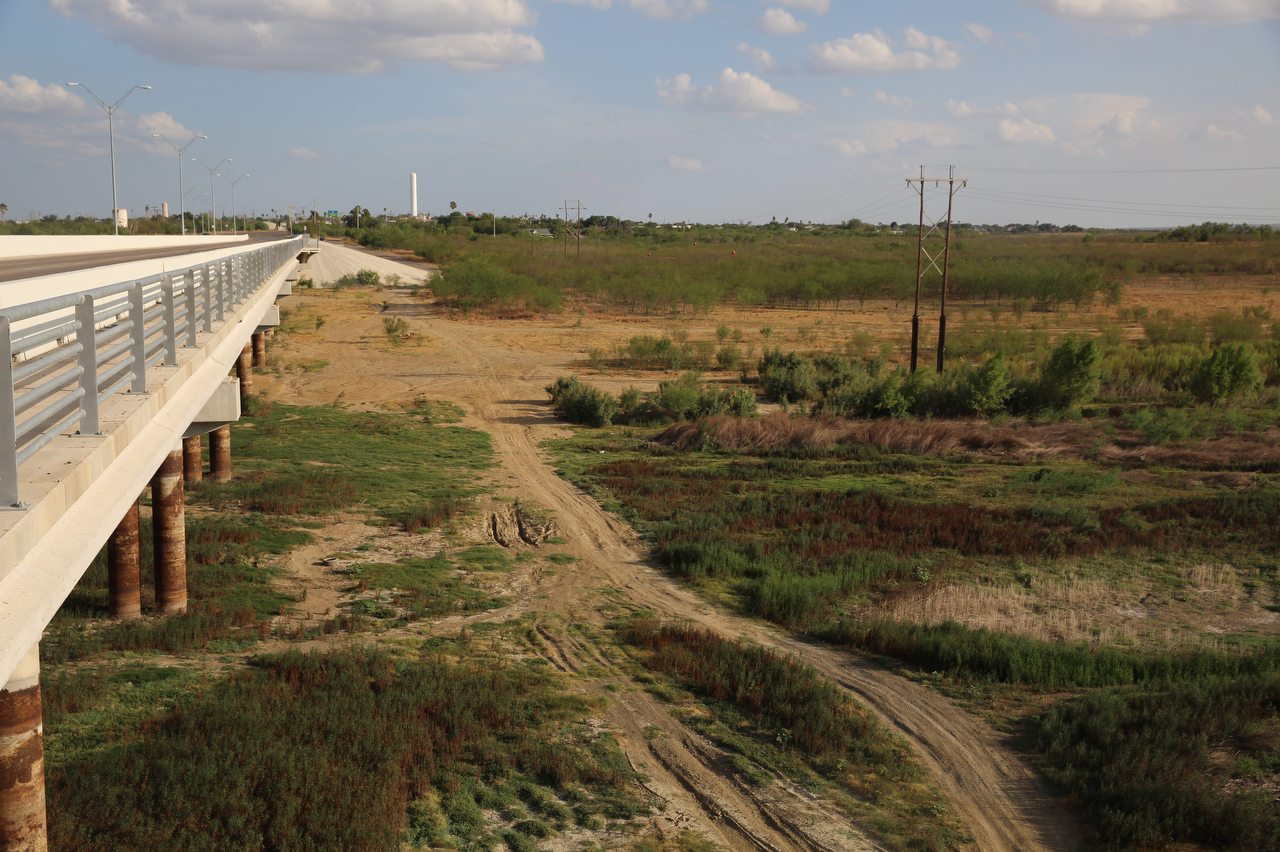
How To Prevent the Next Water Crisis
Amid droughts, climate change and development, Todd Votteler has ideas for how Texas can prevent future conflict over resources.

A version of this story ran in the November / December 2022 issue.
Editor’s note: This is part of Drifting Toward Disaster, a Texas Observer series about life-changing challenges facing Texans and their rivers.
Cities and farmers in Central Texas used to pump groundwater from the Edwards Aquifer much more freely—draining local springs and rivers and depriving several endangered species of a habitat. In the 1990s, the Sierra Club sued the U.S. Fish and Wildlife Service on these creatures’ behalf.
As lawsuits dragged on, a drought arrived, and the court called on a young researcher named Todd Votteler to shepherd the aquifer through the crisis. He hastily slapped together a management plan, and somehow, the region pulled through. The litigation created the Edwards Aquifer Authority and spurred San Antonio—then entirely dependent on the aquifer—to diversify its water supply sources.
As climate change distorts the water cycle and Texas’ population and industry swell, this recent history is perhaps a preview of things to come, with implications well beyond our state. Notably, Texas is embroiled in a decade-long lawsuit against New Mexico over a lack of water flowing down the Rio Grande. The dispute has dragged on in Colorado as well and is now before the U.S. Supreme Court, although the states’ attorneys hope to reach a settlement this year. Votteler is now a fellow at the Meadows Center for Water and the Environment, editor of the Texas Water Journal, and president of a water conflict mediation firm. The Texas Observer asked him how Texas can sustain its rivers and water supplies into the future.
What are the biggest issues facing the state’s rivers today?
Oh, boy. One is the current drought. I’m sure you’re familiar with the situation on the Rio Grande. The Rio Grande is influenced by snowpack. And snowpack has not been good in the southern Colorado region that makes up the headwaters. So you’ve got the drought, and you’ve got declining snowpack, which is related to climate change.
Then you have a dispute between Texas and New Mexico and Colorado before the U.S. Supreme Court over how we decide whether deliveries under the compact between those states are getting to Texas. You have the dispute internationally between the United States and Mexico over the Rio Grande, having to do with deliveries from Mexico to Texas. Mexico’s under a long-term drought, too.
When you look at other rivers, the big issues there—besides the drought—are the preservation of the aquatic environment through [river] flows and what is flowing into the bays and estuaries of Texas.
Other things that I’m keeping my eyes on: In West Texas, reservoirs are in pretty depleted condition. That raises a lot of issues going forward if this drought turns out to be another multi-year drought.
“The big issues—besides the drought—are the preservation of the aquatic environment through [river] flows and what is flowing into the bays and estuaries of Texas.”
How does this year’s drought compare to what has happened historically?
There have been major multi-year droughts in Texas that exceed the drought in the 1950s, which we call the drought of record. Using tree ring chronologies in Texas, we reconstructed the drought cycle back to 1500. Long story short, we found droughts that were worse than the drought of record in Texas in previous centuries.
That study was done prior to the drought of 2011, which ended in 2015 when we had the flood in Wimberley. That was the most recent multi-year drought that impacted the entire state.
Given climate change, even going back to the 1500s might not be that helpful in predicting what’s to come, right?
You’re right. It’s not helpful for that. What it’s helpful for is communicating drought risk to a wide audience. A lot of people are skeptical about projections and models. What we are trying to tell them is, “Look, this is what the biological data recorded in these trees tell us.”
That had a much greater rate of acceptance from all audiences. They were saying, “Okay, we see that. Boy, that’s awful.”
What happens in the future, you can’t really know, can you? That’s one of the things which makes drought management so difficult. You never know when you are in the first day of the next drought.
If you were in charge, how would you make sure we have enough water?
We have a system in place, and completely replacing it would probably be more problematic than modifying it in some key areas. There’s a real need for a diversity of supplies. A lot of cities have a lot of surface water, but they don’t really have groundwater supplies, or they’ve not invested in water reuse.
“You never know when you are in the first day of the next drought.”
The majority of water used in the state of Texas is used for agriculture. There’s a real incentive for us to help farmers use less water so that the supplies they’re drawing from, particularly aquifers, are not depleted.
And then we use a lot of water for urban landscape irrigation, in July and August primarily, which is the most problematic time. So there’s a real need for us to figure out ways to use less water. That can mean landscaping with native plants, and it can mean removing turf or putting in varieties that use less water. A lot can be accomplished just by watering differently—fewer times, but you water more so the roots of grasses grow deeper and they are better able to survive dry periods.
These are challenges that are not insurmountable, but there’s a lot of education that needs to go along with them. It requires people to do things differently.

As you mentioned, the majority of the state’s water use goes to agriculture. But there’s also a sense that our cities are growing; they need more and more water; and some farming communities have already dried out. Is having cities work together with farmers a way to preempt conflicts?
Right. There are ways for municipal and industrial interests to work with the agricultural community to free up some water and to do it in a way that preserves those communities.
There is a possibility of changing the mix of crops in parts of the state that don’t get a whole lot of rain. You look at pecans, pistachios, almonds—those crops have got to have water every year. It’s not like a rice crop or a corn where you might be able to take a year off because the drought is so bad. There are some places in Texas where it might make more sense to have a different mix of crops.
But how is that transition going to happen? That can be more than someone who’s in farming can manage financially. So it makes sense for cities that could benefit to help in that transition, for cities to contract with farmers to say, “Listen, there’s not enough water to go around and we could really use your water during a dry year. And so we’ll pay you every year, a little money. And then that year where we really need you not to irrigate, we’ll pay you a lot more.”
We have two well-structured water markets in Texas: one’s the groundwater market in the Edwards Aquifer Authority, and the other is the Rio Grande from Falcon (Reservoir) to the coast. Those programs work. Those farmers can dryland farm or do something else that year. But they’re being compensated—that’s the important thing. And the cities or industries relying on that water supply have another tool for meeting their needs.
Both markets have been functioning for a number of years. They both resulted from situations where people got into a crisis over the management of those resources. It would be better if we could figure out ways to introduce some of those principles without getting into a crisis first.
This interview has been edited for length and clarity.



